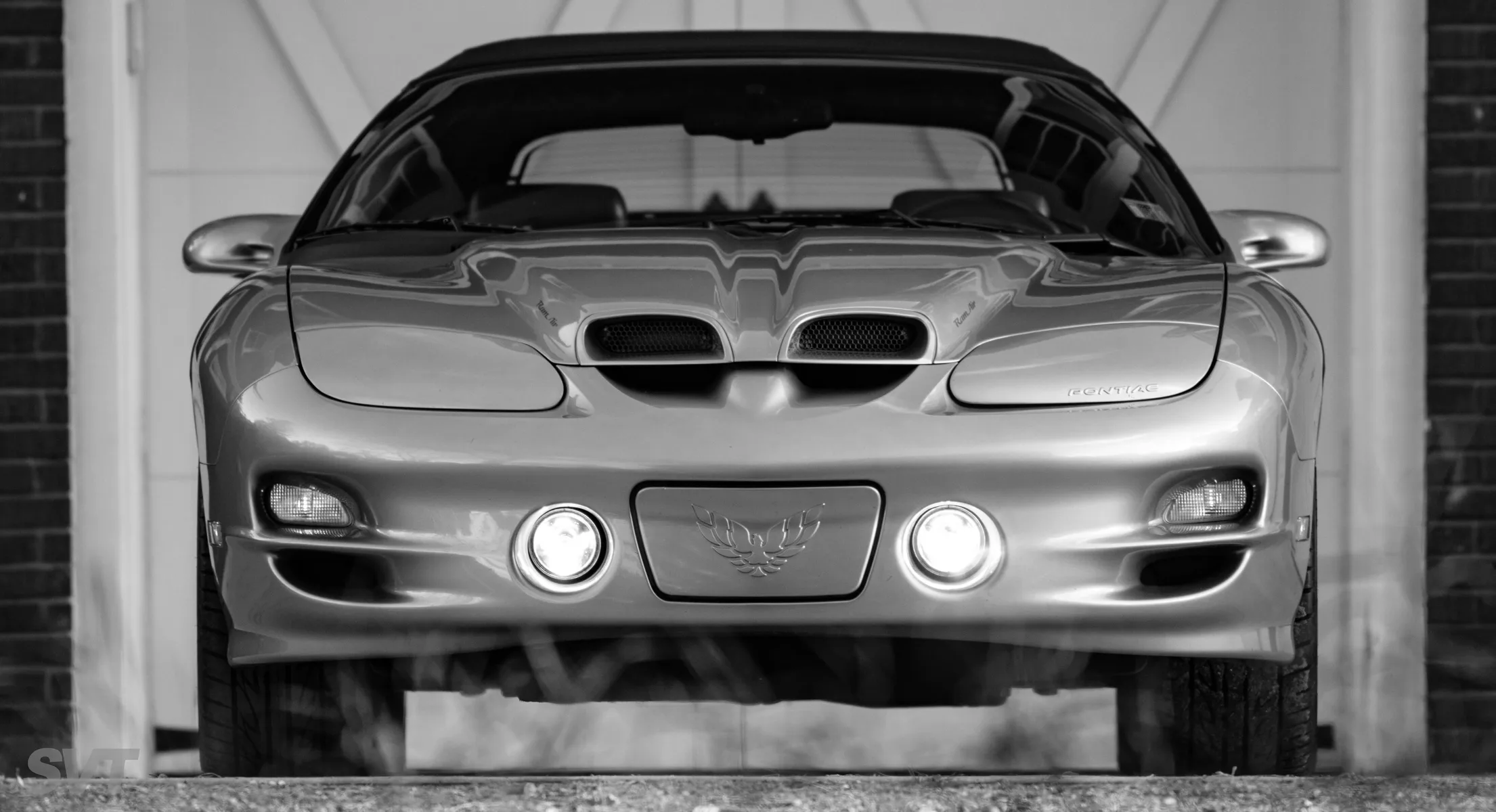Hagerty: Jim Wangers’ secretly-prepped ‘64 GTO from Car and Driver’s cover is alive and in good hands
Tenney Fairchild's 1964 Pontiac GTO

Jim Wangers’ secretly-prepped ‘64 GTO from Car and Driver’s cover is alive and in good hands
28 March 2019
20190923204322)
“I got to ride in this car when I was a kid,” Tenney Fairchild says, gently pulling the duster across the hood of his red 1964 GTO. “I was four years old, and the car was brand-new. I remember smelling the oil and the exhaust. I remember trying to peer over the hood to look at the engine. This car is the reason I’m obsessed with cars.”
[This article originally ran in Hagerty magazine, the exclusive publication of the Hagerty Drivers Club. For the full, in-the-flesh experience of our world-class magazine—as well other great benefits like roadside assistance and automotive discounts—join HDC today.]
With a thump created by 13:1 compression, the Pontiac’s big 421 idles in Fairchild’s driveway high in the Hollywood Hills above Los Angeles. He swipes the dust from the Royal Bobcat sticker on the muscle car’s C-pillar. “Jim would give me rides in it, ‘a shot through the gears,’ as he called it,” says Fairchild. Then his voice jumps a few octaves, and for an instant, the 58-year-old film director is four years old again. “Thanks, Mr. Wangers,” he says with a smile.
In early 1964, Jim Wangers was an accomplished drag racer and a regular street racer on Detroit’s Woodward Avenue. He also worked at MacManus, John & Adams, Pontiac’s advertising agency, where Fairchild’s father, Phil, was a copywriter. It was Wangers’s job to sell Pontiac’s new factory hot rod, the GTO, to the world.
Today, more than 50 years later, Jim Wangers is considered by many to be the godfather of the GTO, and some say this GTO, the very car idling in Fairchild’s driveway, is the world’s most important surviving muscle car.
20190327175316)
Car and Driver
“The car really came alive when the March 1964 issue of Car and Driver appeared, with the controversial cover story featuring a performance comparison between the world’s two most famous GTOs, the new upstart from Pontiac against the legendary, world-class Ferrari,” Wangers wrote in his memoir Glory Days.
It was Fairchild’s GTO that Car and Driver magazine tested for its infamous cover story. And it’s that single piece of media, engineered by Wangers, that jump-started GTO sales and the original muscle-car era.
In the late fall of 1963, Wangers sold the editor of Car and Driver, David E. Davis, Jr., on the GTO vs. GTO idea, and the test was scheduled at Daytona International Speedway between Christmas and New Year’s. Wangers supplied two Pontiac GTOs for it.
The first one was a Nocturne Blue pilot car with the optional 348-hp Tri-Power engine, a wide-ratio four-speed, and a limited-slip rear end with 3.55 gears. Known as “the blue car,” it was to be used for street driving, the road course, and skidpad testing.
The second GTO was known as “the red car” and was to be used only for acceleration runs. This is the car now owned by Fairchild, and it’s the car Jim Wangers lied about for 34 years.
20190327175101)
The GTO engine has a date-coded block and what Tenney Fairchild believes are the original heads. To fool C/D editors in 1964, Jim Wangers updated the casting numbers, and there was no way to tell the engine from a standard GTO mill. Evan Klein
Special-ordered and prepared by Wangers, Fairchild’s Grenadier Red GTO left the factory with the Tri-Power 389, M-20 four-speed, and 3.23 gears. But that’s not how it was configured when it arrived at Daytona. Instead, Wangers built it into a “ringer.”
To save weight, he had it built without sound insulation or seam sealer. Then Wangers had Pontiac engineering swap its 389 for a 421 H.O. from the larger Catalina, along with a close-ratio M-21 four-speed and 3.90 gears. The swap fooled everyone, including the editors of Car and Driver. Wangers didn’t reveal the truth to anyone until his memoir was published in 1998.
“So the magazine guys wouldn’t get suspicious, he equipped the car with a few options including power steering, a power antenna, and the fancy hubcaps,” says Fairchild. “He wanted it to look like a regular GTO any dealer might have in stock.”
The Car and Driver editors spent most of the day making stopwatch-timed acceleration runs and recording incredibly quick times. Wangers knew the times recorded—0 to 60 in 4.6 seconds, 0 to 100 in 11.8 seconds, and a 13.1-second quarter-mile at 115 mph—were too good to be true, but he kept his mouth shut.
20190327174825)
The “Royal Bobcat” badge is a nod to the legendary dealership that first prepared this special car. Evan Klein
20190327174938)
Fairchild’s ’64 GTO features a wood dash panel and steering-wheel hub that Jim Wangers sold on Woodward Avenue. Evan Klein
He flat-towed it home behind the blue car and had Royal Pontiac install a fresh 421. The red car would become his daily driver and Woodward Avenue racer until the following August, when it went back to Royal and was quickly sold to Royal Oak police officer Bill Sherman for $3200.
By the time Joe Conte, a New Jersey Corvette collector, bought the GTO in 1991, it was a rusty old drag car with a heavily modified and incorrect 428. But Conte was aware of the car’s history and stored it safely. Then Fairchild came calling. “I emailed Conte in the late 1990s and continued to check in periodically,” he says. “I was finally able to buy the car in 2005.”
Fairchild drove the GTO around Los Angeles for a couple of years before turning it over to Scott Tiemann at Supercar Specialties in Portland, Michigan, for a yearlong restoration back to its Car and Driver test configuration. Because it was originally built without seam sealer, the GTO had rusted badly, but Tiemann used as many original parts as possible, replacing only the floors and driver’s side quarter-panel.
A date-coded 421 H.O. block was found, although the cylinder heads and intake manifold are thought to be the originals. Most of the interior is also original, including the seat covers. “There are still a couple of cigarette burns in the driver’s seat,” says Fairchild.
20190327175134)
Tenney Fairchild Evan Klein
Deviations include a wood dash panel from a ’65 GTO and 4.33 gears, which Sherman installed many years ago.
These days, the GTO shares Fairchild’s garage with a Tesla Model 3, but he shows and drives the GTO regularly.
“When you drive a little plug-in car every day, by the weekend you want to get out and burn some 110,” says Fairchild. “I love pushing my right foot through the detent in the throttle and hearing those two outer carbs open. The best part is knowing this car did a bunch of cool stuff I had nothing to do with. That’s pretty cool.”

See Your Local Chapter Events
Our chapters often sponsor car shows and other events.




